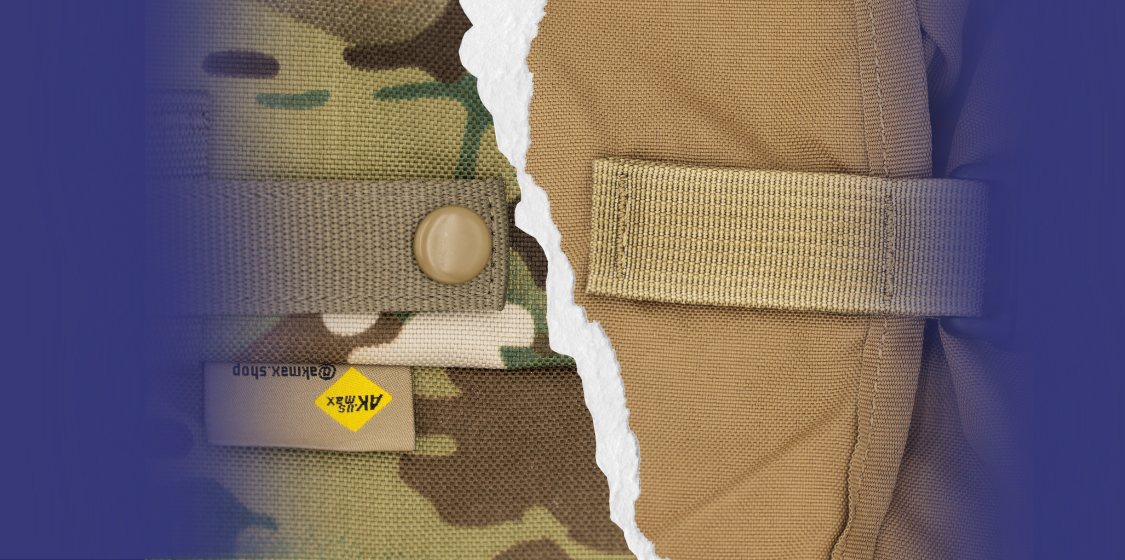17337 vs. A-A-55301 Webbing: Breaking Down the Difference
Not all military-spec webbing is built the same. Two of the most common specs people run into are 17337 and A-A-55301. Both are nylon webbings, but they’re made differently and used for slightly different purposes.
MIL-PRF-17337
Also known as MIL-17337, MIL-W-17337, or simply 17337 webbing.
Main Differences
17337 is a nylon webbing made from flat filament yarns. The construction in 17337 never changes based on the type — the “type” only tells you the width.
The official 17337 specification is only offered in 1”, 1.5”, 2”, 3”, and 3.5” widths. Other sizes are available (such as 3/8”, ½”, ¾”, and 1-23/32”), but these technically fall outside of the military specification.
Specification Chart
Width | Specs | Class | Tensile (lbs) |
3/4″ | MIL-17337 CL-2 | 2 | 900 |
1″ | MIL-PRF-17337G CLASS-2 | 2 | 1200 |
1-1/2″ | MIL-PRF-17337G CLASS-3 | 2 | 1800 |
2″ | MIL-PRF-17337G CLASS-4 | 2 | 2200 |
3″ | MIL-PRF-17337G CLASS-5 | 2 | 3200 |
3-1/2″ | MIL-PRF-17337G CLASS-6 | 2 | 4000 |
MIL-PRF-17337G replaced MIL-W-17337F, but most people still search for MIL-W-17337 or 17337 webbing.
Construction Details
- Uses only flat nylon yarns.
- Does not require twisted or plied yarns (unlike MIL-W-4088 webbing).
- Does not call for textured yarns (unlike A-A-55301).
- Woven as a single plain weave using:
- 840 denier warp threads (lengthwise).
- 420 denier fill/weft threads (crosswise).
Because it is a single-layer weave, 17337 webbing is pliable, lightweight, and flexible compared to A-A-55301, which uses heavier yarns and a double weave.
Typical Uses: Backpacks, slings, bags, duffle bags, athletic gear, and reinforcing the edges of belts.
A-A-55301 Webbing
Also a nylon webbing but constructed differently from 17337.
Construction
A-A-55301 uses either a combination of textured yarns and flat yarns or only textured yarns, depending on the type. Each type specifies a different width.
Specification Chart
Specs | Type | Width | Tensile (lbs) |
A-A-55301A TYPE 1 STANDARD | 1 | 2-1/4″ | — |
A-A-55301A TYPE 1 ALTERNATIVE | 1 ALT | 2-1/4″ | — |
A-A-55301A TYPE 2 | 2 | 1-1/4″ | 2000 |
A-A-55301A TYPE 3 ALTERNATIVE | 3 ALT | 1″ | 1000 |
A-A-55301A TYPE 3 STANDARD | 3 | 1″ | — |
A-A-55301A TYPE 4 | 4 | 3/4″ | 875 |
A-A-55301A TYPE 5 | 5 | 5/8″ | 62 |
A-A-55301A TYPE 6 | 6 | 1-1/2″ | 1500 |
A-A-55301A replaced MIL-W-43668C, and most people refer to this spec simply as 55301 webbing.
Standard vs. Alternative Construction within A-A-55301 Nylon Webbing
- Standard construction: Requires 100% bulk® (textured nylon), often Cordura yarn.
- Alternative construction: Made from a mix of flat filament and bulk textured® yarns. The warp is flat filament; the fill uses Cordura®.
Weave
- All A-A-55301 constructions are double plain weaves, meaning 2 layers of a single plain weave conjoined by a binder warp thread, connecting both layers.
- Woven with:
- 1000 denier textured warp threads. (Lengthwise)
- 500 denier textured fill/weft threads. (Crosswise)
- Because it’s a double weave, A-A-55301 is thicker, less pliable, and heavier than 17337, though still flexible.
In Summary:
- 17337 → Flat yarns, single weave, lighter, and very flexible.
- A-A-55301 → Textured yarns (or mixed), double weave, thicker, stronger, and less pliable.

